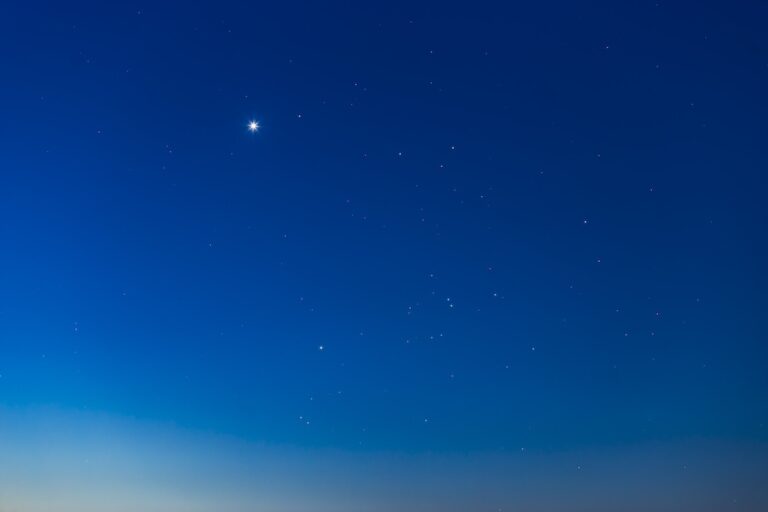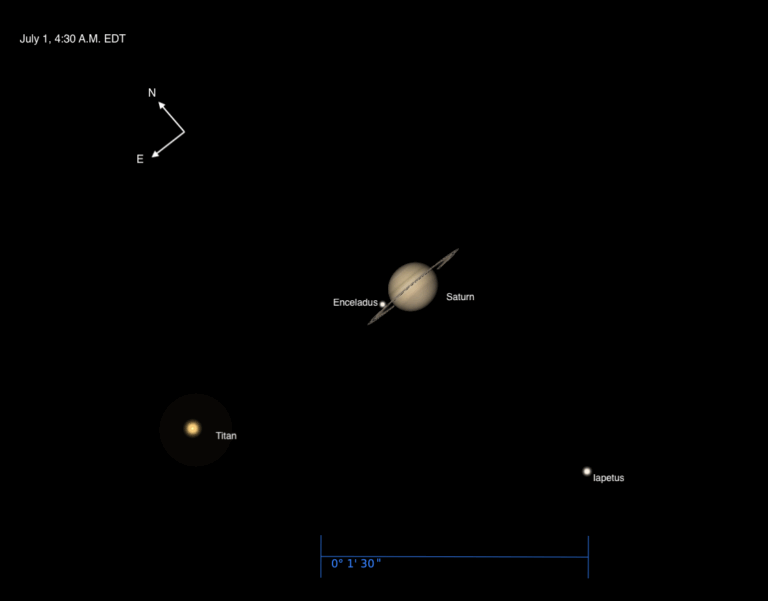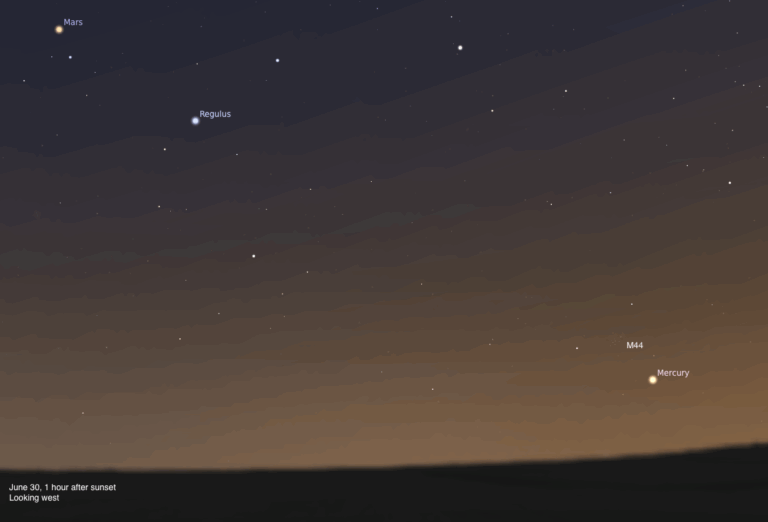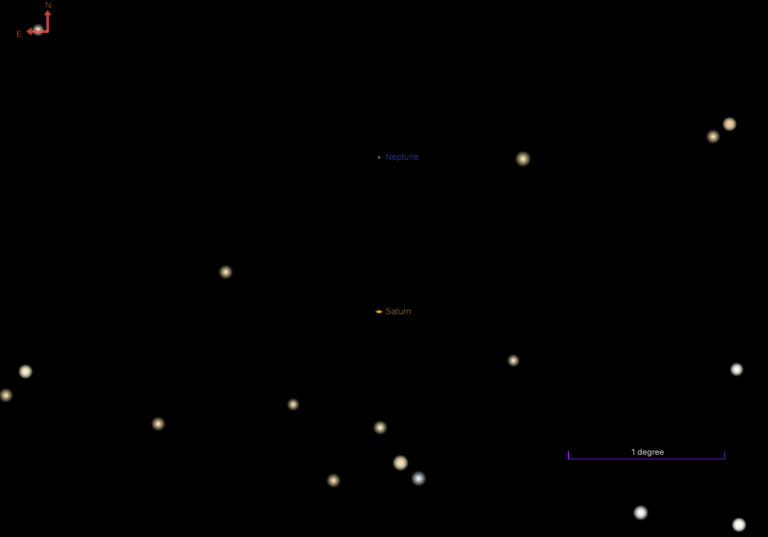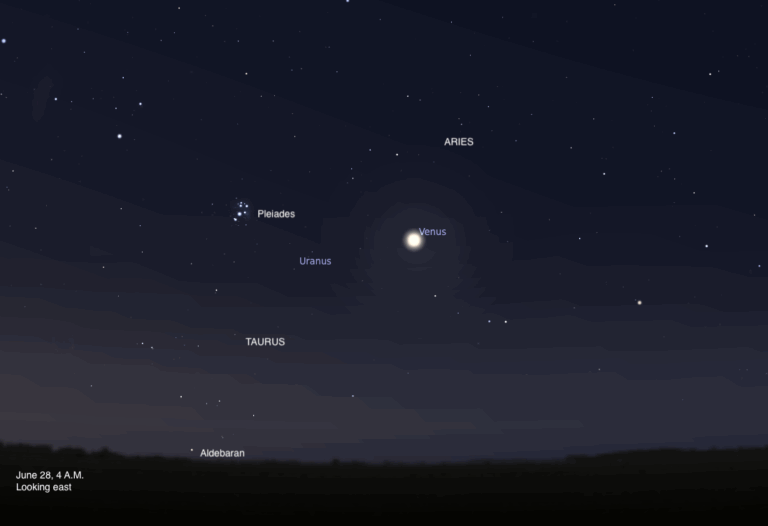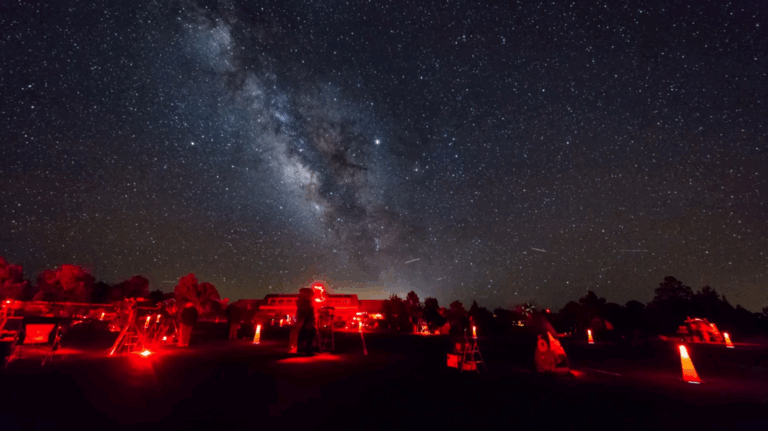“Super Moon” never used to be a term uttered by astrophysicists, but now, almost everyone is using it. The public loves this concept, and, after all, it’s a celestial event that physically affects us. We can’t say that about a Jupiter opposition or a supernova in the Whirlpool Galaxy.
In my area, people taking the woodsy trail along the Hudson River within an hour of high tide on November 15 will have to wade through knee-deep water. (Tides are highest one day after a Super Moon). It’s a tangible connection between our world and the cosmos. The Moon hasn’t been this close since January 26, 1948.
The media nonetheless feel compelled to exaggerate. They’ll probably tell everyone to look up and see an enormous Moon. Actually, this largest Moon is only 7 percent bigger than average. That’s not a noticeable size difference. As our readers know, the most dramatic effect happens at dusk when the Full Moon rises. Seen just over the skyline so that earthly objects are near it, the Moon looks much bigger. This well-known Moon illusion boosts its perceived size far more than its perigee. But let’s see how close closest approach can get us, even if our eyes won’t appreciate the difference.
At 6:24 a.m. EST, the Moon will be only 356,509 kilometers away. That’s 221,524 miles — truly impressive! The previous noteworthy lunar perigee happened December 12, 2008, when it was just 36 miles (58km) more distant. Before that we had the perigee of March 8, 1993, and this month’s approach bests that one by a mere 12 miles (19km).
All of these super-close encounters happened within a few hours of the Full Moon. This is no coincidence. The Moon’s far point, or apogee, barely varies month to month, but perigee is a different story. The only way the Moon can approach so closely is by ramping up the overall gravitational influence by aligning with the Sun, which happens exclusively at a New or Full phase. Writers who want to make it seem as if the Full Moon/close Moon confluence is an amazing coincidence ignore the fact that such nearby lunar visits simply never happen during the Half, Crescent, or Gibbous times of the month.
Notice, too, that these previous “Super-Duper Moons” were all within a few months of Earth’s perihelion in early January. That’s no coincidence, either. Having the Sun nearer to us (and therefore more gravitationally influential) helps the Moon’s orbit change shape and come a bit closer.
“THIS EXTRAORDINARILY CLOSE LUNAR APPROACH IS NOT HYPE — WELL, NOT ALL HYPE.”
This year’s close approach is a two-night affair for North American observers. Perigee occurs during the early morning of the 14th, with Full Moon three hours later. So the Moon actually will be a bit larger Sunday night, the 13th. Count on this being overlooked in most news stories.
Seeing the very largest Moon requires that you stand on Earth where the Moon is closest to you. Observing from atop Mount Everest wouldn’t normally do the job — you’d need to use Earth’s 26-mile-high equatorial bulge, and thus choose a tall peak near the equator. The ideal place is usually Mount Chimborazo in Ecuador. But not this time. The closest Moons occur in the northern section of the zodiac. With the Moon in Aries on November 13 and in Taurus the next night, you’d get closest by sticking with Everest.
Pick the wrong place — say, Antarctica — and now the Moon looks 3 percent smaller. Bad timing shrinks it, too. Despite illusory appearances, the Moon is more distant whenever it’s low in the sky. It grows measurably larger when high overhead because Earth’s rotation has then carried you as much as 4,000 miles closer to it.
This inflates the lunar disk by another 2 percent.
Because this Moon is north of Earth, you’d get nicely close by driving to it if you choose Mauna Kea in Hawaii. In the northern tropics, it offers some of that bulge advantage, and you’d be up 14,000 feet (4.3km), though you’ll need four-wheel drive.
But hey, no need to go to all that trouble. The best Full Moon in years is right out your window.



